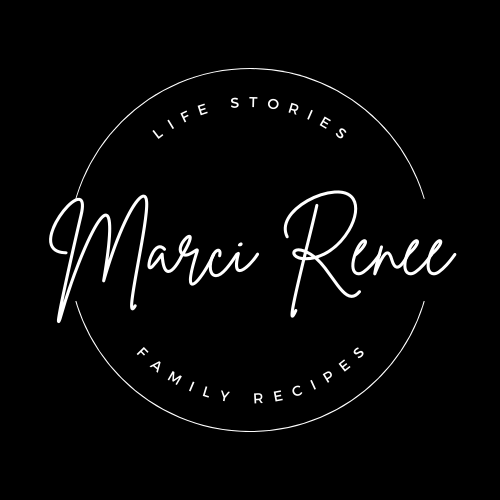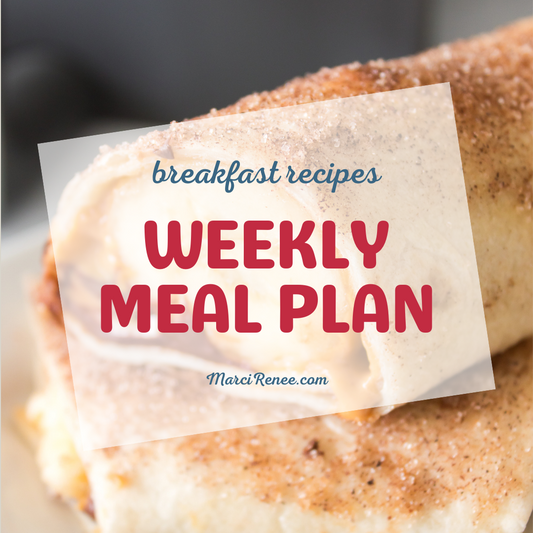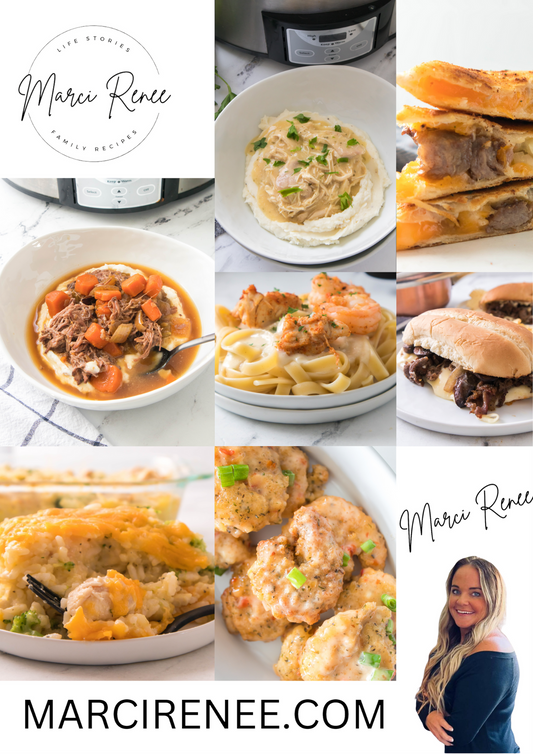Recipe for SEO Success: How to Audit Your Food Blog for Google's Latest Algorithms
Marci LoehnerShare
In the ever-evolving world of SEO, staying on top of Google's algorithm changes is crucial for any blogger, especially those in the vibrant and competitive food niche. Recent updates from Google, including the March 2025 Core Update, have reinforced a clear message: helpful, people-first content created by genuine experts is king.
 For recipe bloggers, this means it's more important than ever to ensure your delicious content is not only visually stunning and easy to follow but also optimized to meet Google's latest standards. It's time for a thorough blog audit!
For recipe bloggers, this means it's more important than ever to ensure your delicious content is not only visually stunning and easy to follow but also optimized to meet Google's latest standards. It's time for a thorough blog audit!
This isn't about chasing fleeting trends; it's about building a robust, trustworthy, and user-friendly site that Google wants to show off. Let's dig in.
Why Audit Your Food Blog Now?
Google's algorithms are constantly refining how they understand and rank content. The latest shifts emphasize:
- E-E-A-T (Experience, Expertise, Authoritativeness, Trustworthiness): Google wants to highlight content from creators who demonstrate real-world experience, deep knowledge, and are trusted sources.
- Helpful Content: Content that genuinely solves a user's problem, answers their questions thoroughly, and provides a satisfying experience.
- User Experience (UX): Site speed, mobile-friendliness, and ease of navigation are paramount. If your site frustrates users, it will likely frustrate Google too.
- AI Overviews & Rich Results: While some rich results might fluctuate, optimizing for recipe carousels and specific snippets is still vital for visibility.
Ignoring these shifts can lead to a drop in search rankings and traffic. A comprehensive audit helps you identify weaknesses and capitalize on opportunities.
Your Recipe Blog SEO Audit Checklist
Here’s how to perform a deep dive into your food blog’s SEO, focusing on what matters most for the current algorithms:
1. E-E-A-T & Content Quality Audit
This is where "people-first" truly shines.
- Review Your About Page & Author Bios: Do they clearly showcase your experience, expertise, and passion for cooking and recipe creation? Include any culinary training, awards, or relevant personal experience. Make it easy for Google (and users!) to understand who is behind the content.
-
Demonstrate First-Hand Experience: For each recipe, ensure you clearly convey that you have personally made and tested it. This could be through:
- Behind-the-scenes photos/videos: Show yourself in the kitchen, key steps, or the finished dish in your unique style.
- Personal anecdotes: Share your journey with the recipe, challenges overcome, or why it's a favorite.
- Troubleshooting tips/variations: Show your in-depth knowledge beyond just basic instructions.
-
Comprehensive & Unique Content:
- Go Beyond the Basics: Does your recipe post offer more than just ingredients and instructions? Include tips, substitutions, serving suggestions, storage advice, and cultural context if relevant.
- Originality: While classic recipes exist, can you offer a unique spin, a different technique, or a distinct voice that sets your version apart?
- Accuracy & Reliability: Double-check all measurements, temperatures, and cooking times. Ensure your recipes consistently work as described. User reviews and comments are crucial for building trust here.
- Address Nutritional Information with Caution: If you share nutritional info, ensure it's from a credible source or clearly state it's an estimate. If you're not a qualified nutritionist or dietitian, avoid making specific health claims.
- Proofread Meticulously: Typos and grammatical errors detract from trustworthiness.
2. Technical SEO Deep Dive
This is the foundation upon which your delicious content sits.
-
Crawlability & Indexing:
- Google Search Console (GSC): This is your best friend! Check the "Index Coverage" report for errors, excluded pages, or issues blocking Google from seeing your content.
-
Robots.txt & XML Sitemap: Ensure your
robots.txtfile isn't blocking important pages, and your XML sitemap is up-to-date, submitted to GSC, and only includes pages you want indexed.
-
Core Web Vitals:
- Page Speed: Use Google's PageSpeed Insights to identify slowdowns on both desktop and mobile. Optimize image sizes (see below), leverage browser caching, and consider a Content Delivery Network (CDN).
- Mobile-Friendliness: Most users access recipes on mobile. Use Google's Mobile-Friendly Test. Ensure responsive design, easy-to-tap elements, and no awkward overlaps.
- Layout Stability (CLS - Cumulative Layout Shift): Do elements on your page jump around while loading, causing users to accidentally click something else? This is particularly noted for recipe blogs with "significant scrolling" and can be a big UX irritant.
- HTTPS Security: Your site must be on HTTPS. If not, make the switch immediately.
- Broken Links: Use GSC or a crawler tool (like Screaming Frog) to find and fix broken internal and external links.
- Duplicate Content: Check for accidental duplicate content within your site that could confuse search engines.
-
URL Structure: Keep your URLs clean, concise, descriptive, and keyword-rich (e.g.,
yourblog.com/creamy-garlic-pasta).
3. On-Page SEO Optimization
This is about making your content understood by both humans and search engines.
-
Keyword Research (with Intent):
- Beyond Volume: Focus on search intent. What is the user really looking for when they type a query? Are they looking for instructions, inspiration, dietary variations, or quick meals?
- Long-Tail Keywords: Target more specific, longer phrases (e.g., "easy gluten-free chocolate chip cookies for kids") as these often have lower competition and higher conversion rates.
- Competitor Analysis: What keywords are your successful competitors ranking for?
-
Title Tags & Meta Descriptions:
- Compelling & Keyword-Rich: Craft titles and descriptions that include your main keyword, accurately describe the recipe, and entice clicks. Keep titles under 60 characters and descriptions under 160 to avoid truncation.
- Sensory Language: Use descriptive words that appeal to taste and smell ("creamy," "fluffy," "spicy," "aromatic").
-
Headings (H1, H2, H3, etc.):
- Structure Your Content: Use a clear hierarchy. Your recipe title should be your H1. Use H2s for major sections (Ingredients, Instructions, Tips, FAQs) and H3s for sub-sections.
- Include Keywords Naturally: Integrate relevant keywords into your headings where appropriate, but avoid stuffing.
- FAQs as Headings: Incorporate common questions as H2 or H3 headings, as these are great for potential rich results and AI Overviews.
-
Internal & External Linking:
- Internal: Link strategically to other relevant recipes, technique posts, or kitchen tool guides on your blog. This keeps users engaged and helps Google understand your site's structure.
- External: Link to authoritative, trustworthy external sources when citing information (e.g., a nutrition database, a culinary history site).
-
Image & Video Optimization:
-
Descriptive Filenames: Instead of
IMG_1234.jpg, usecreamy-tomato-pasta-recipe.jpg. - Alt Text: Crucial for accessibility and SEO. Describe the image accurately for visually impaired users and include relevant keywords.
- File Size: Compress images and videos to reduce page load times without sacrificing quality. Use modern formats like WebP.
- Recipe Videos: Embed short, engaging videos that demonstrate key steps or the finished dish, formatted for platforms like Reels or TikTok.
-
Descriptive Filenames: Instead of
4. User Experience (UX) for Recipe Posts
Google prioritizes sites that offer a great experience.
- Clear "Jump to Recipe" Button: Google specifically noted issues with excessive scrolling on recipe blogs. Make your "Jump to Recipe" button prominent and easy to find, ideally at the top of the post.
- Readability: Break up long paragraphs, use bullet points for ingredient lists, and incorporate plenty of white space.
- Intuitive Navigation: Ensure your menu and categories are clear, allowing users to easily find what they're looking for.
- Minimal Intrusions: While ads and pop-ups are part of blogging, excessive or poorly timed ones can significantly harm UX. Test their placement and timing.
- Recipe Card Plugin: Use a reputable recipe card plugin (e.g., WP Recipe Maker, Tasty Recipes) to ensure your recipe data is structured correctly and displayed cleanly.
5. Structured Data (Schema Markup)
This is how you help Google understand the specific components of your recipe.
-
Implement Recipe Schema: Use JSON-LD to mark up your recipes with detailed information such as:
-
name(recipe title) image-
author(your first and last name, linking to your author page) datePublisheddescription-
prepTime,cookTime,totalTime recipeYieldrecipeIngredient-
recipeInstructions(step-by-step) -
nutritionInformation(if applicable) -
aggregateRating(if you have user reviews)
-
- Test Your Schema: Use Google's Rich Results Test tool to ensure your structured data is correctly implemented and eligible for rich snippets.
- Focus on Accuracy: Inaccurate or incomplete schema can be detrimental.
Tools to Help with Your Audit
- Google Search Console (Free): Essential for crawl errors, indexing issues, performance reports, and rich result status.
- Google Analytics (Free): Understand user behavior, traffic sources, and popular content.
- Google PageSpeed Insights (Free): Analyze and get recommendations for improving site speed.
- Google's Rich Results Test (Free): Verify your structured data.
- Screaming Frog SEO Spider (Freemium/Paid): A powerful crawler for identifying broken links, redirects, missing meta data, and other technical issues.
- SEMrush, Ahrefs, Moz (Paid): Comprehensive SEO suites for keyword research, competitive analysis, backlink auditing, and technical site audits.
- Yoast SEO or Rank Math (WordPress Plugins, Freemium): Help with on-page SEO, schema markup, and general site health checks.
The Ongoing Process
An SEO audit isn't a one-and-done task. SEO is an ongoing process. Schedule regular, perhaps quarterly, mini-audits to ensure your food blog remains healthy and aligned with Google's evolving algorithms.
By focusing on genuine helpfulness, user experience, and demonstrating your unique E-E-A-T as a recipe creator, you'll not only satisfy Google's latest algorithms but, more importantly, continue to delight your audience and build a loyal community around your delicious content. Happy auditing, and happy cooking!
Reach out to Marci at Marci@MarciRenee.com for help, insights, questions or comment below!





